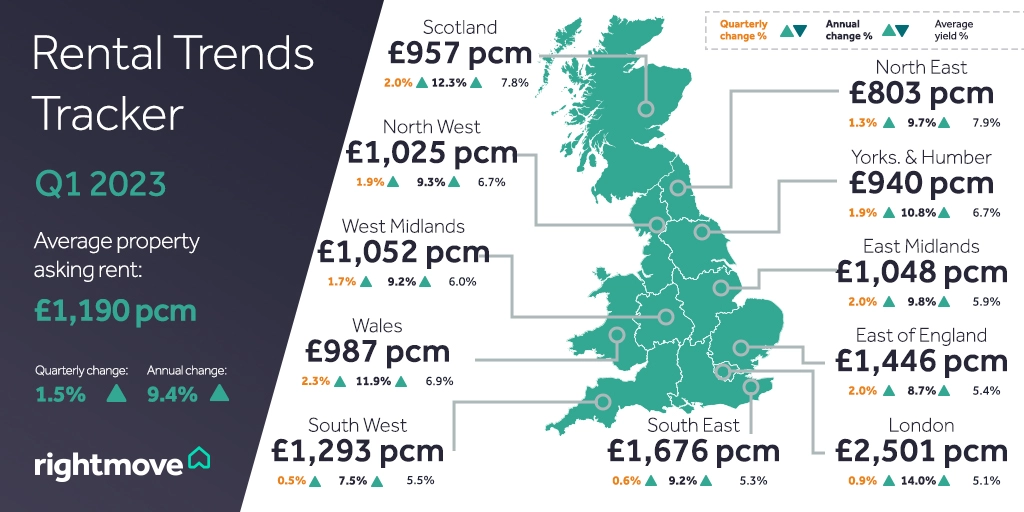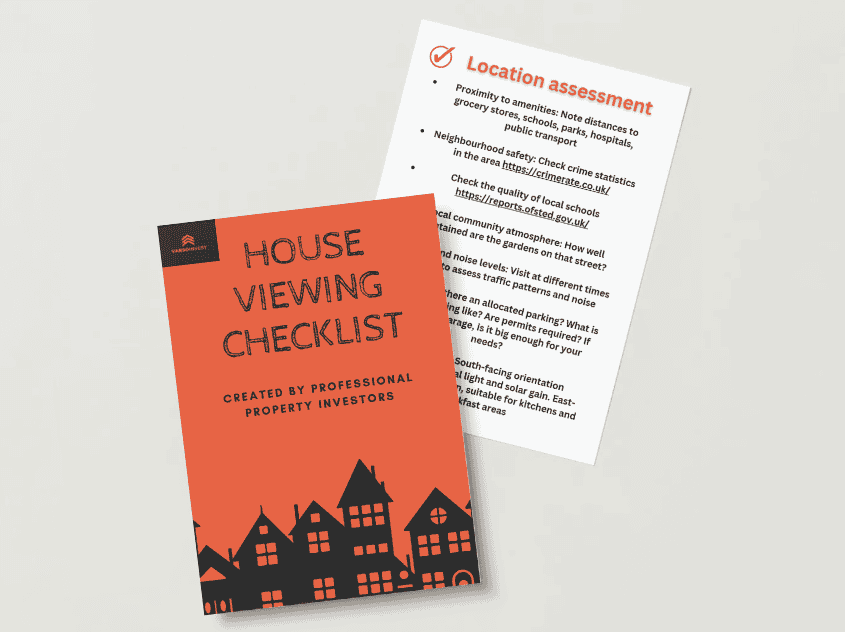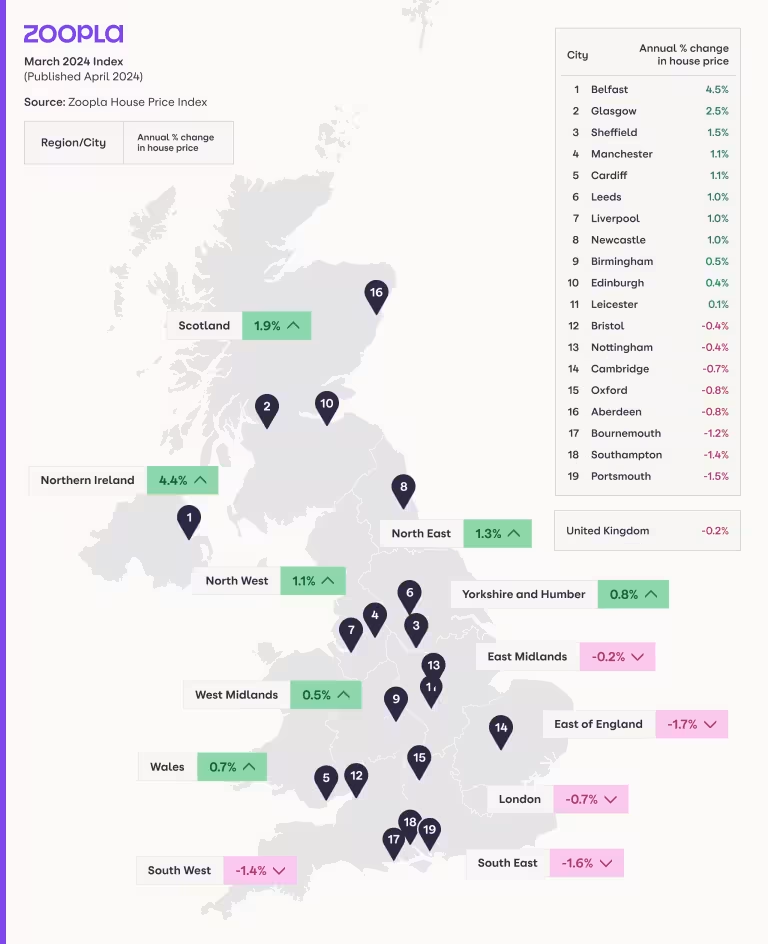Buy-to-Let Property: A Comprehensive Guide for Investors
In today’s dynamic real estate market, buy-to-let property has enticed many investors. This guide aims to provide a deeper dive into buy-to-let investments, shedding light on this strategy’s key features, financial factors, and potential returns.
At its core, a buy-to-let property is a residential property purchased with the primary intention of renting it out to tenants. This strategy offers investors a consistent rental income stream and presents the opportunity for long-term property value appreciation. However, like any investment, it comes with challenges and risks that require careful consideration.
In the following sections, we’ll explore the fundamentals of buy-to-let investments, from grasping the basics to navigating the intricacies of financing and property management. Whether you’re an experienced investor or just beginning your journey into real estate, this guide will equip you with the knowledge to make informed decisions and optimise your returns.
What is a Buy-to-Let Property?
A buy-to-let property is a real estate investment whose primary goal is to purchase a property and rent it out to tenants. The aim is to generate rental income while hoping the property’s value appreciates over time. Unlike buying a home, this type of investment is about turning the property into a source of income, not a personal residence.
For many investors, buy-to-let properties offer a way to diversify their portfolios. The appeal lies in the dual potential: steady rental income and the possibility of selling the property for a higher price. This combination makes buy-to-let properties popular for those looking to grow their wealth through real estate.
However, it’s more complex than buying a property and waiting for the profits to roll in. Careful planning and active management are essential. From understanding the local rental market to maintaining the property, a successful buy-to-let investment requires effort. A well-thought-out strategy is crucial to maximising returns and avoiding common pitfalls.
Key Features of Buy-to-Let Properties
- Role of the Buy-to-Let Landlord: The landlord owns and rents the property to tenants. Effective property management ensures the property complies with legal standards and remains attractive to potential renters.
- Financial Commitment: Investors must account for mortgage payments, maintenance costs, and property management fees. Understanding the local rental market is crucial for setting the right rent—high enough to generate profit but competitively sufficient to attract reliable tenants.
- Long-Term Perspective: Buy-to-let investments typically require patience. While rental income can start flowing relatively quickly, substantial property value growth often takes time. Investors must be prepared for the long haul to achieve the best returns.
How Buy-to-Let Properties Generate Income
The primary way buy-to-let properties generate income is through rental income. Tenants usually pay rent monthly in exchange for living in the property. This rent becomes the landlord’s income, creating a direct link between the property and the revenue it produces.
To maximise rental income, landlords must:
- Keep their properties in good condition to attract tenants and reduce vacancy periods.
- Ensure the property is located in a desirable area.
- Set the right rent, reflecting the property’s value and local market conditions. The rent should not be too high to deter tenants or too low to cut into profits.
In addition to rental income, buy-to-let properties can appreciate over time. As property prices rise, landlords may choose to sell and realise a profit. This dual income potential—rental income and capital appreciation—makes buy-to-let investments attractive for those seeking to build wealth through real estate.
Financing Your Buy-to-Let Property
So, you’re thinking about stepping into the world of buy-to-let investments? Great choice! But before you dive in, one of the first things you’ll need to get a handle on is how to finance it. A crucial part of that process is securing a buy-to-let mortgage. Now, this isn’t your run-of-the-mill residential mortgage. It’s specifically designed for properties that generate rental income. The loan amount is typically based on the rent you expect to bring in, making it a unique financial product tailored for property investors like yourself.
When you apply for a buy-to-let mortgage, lenders will scrutinise several factors to ensure the investment is sound:
- Potential rental income: Lenders will assess whether the expected rent will comfortably cover your mortgage payments.
- Property location: The area’s desirability and rental demand will be considered.
- Property condition: The state of the property can impact its rental potential.
Additionally, lenders often require a larger deposit (usually 25%) than they would for a standard residential mortgage. Why? They tend to view rental properties as a bit riskier investments.
By understanding how buy-to-let mortgages work, you’ll be more likely to make informed decisions and fine-tune your investment strategy. In the following sections, we’ll explore the various mortgage options available to investors and break down how rental income is pivotal in determining what you can afford.

Maximising Returns on Your Buy-to-Let Investment
Investing in buy-to-let properties can be incredibly rewarding. However, the real challenge lies in maximising your returns. Your financial gains from buy-to-let investments come from two primary sources: rental income and capital growth. Mastering both is essential to boosting your investment’s profitability.
Rental income provides immediate cash flow. By setting competitive rent and maintaining high occupancy, you ensure a steady stream of income. But don’t overlook capital growth—the increase in your property’s value over time. As property prices rise, the potential to sell at a profit becomes a significant advantage for buy-to-let investors.
To maximise your returns, you must find the right balance between these two factors. This involves selecting the right property, managing it effectively, and staying informed about market trends. By doing so, you’ll enjoy short-term gains and build long-term wealth.
Understanding Rental Yield and Its Importance
Rental yield is a key metric when evaluating the profitability of your buy-to-let investment. It measures the return on your investment by calculating your annual rental income as a percentage of the property’s value. The higher the rental yield, the better your investment performs, making it crucial for any investor to monitor.
To calculate rental yield, follow these steps:
- Divide your annual rental income by the property’s purchase price.
- Multiply the result by 100 to get a percentage.
This simple formula allows you to compare properties and make informed decisions. A higher rental yield often means better cash flow and a quicker return on investment.
However, rental yield is only part of the equation. While it gives you a snapshot of your immediate income, it doesn’t account for factors like property appreciation or maintenance costs. Therefore, using rental yield alongside other metrics is best to get a complete picture of your property’s profitability.

Capital Growth: Long-Term Profit Potential
While rental yield offers immediate financial benefits, capital growth is where the long-term profit potential lies. Capital growth refers to the increase in your property’s value over time, and when you eventually sell, this can lead to substantial profits.
If you’re aiming for capital growth, focus on properties in areas with strong economic prospects and solid infrastructure. These factors tend to drive demand, which pushes property values up. Keeping your property in good condition and making intelligent improvements can further enhance its value.
Balancing rental yield with capital growth is essential for maximising your investment. While rental income keeps the cash flowing, capital growth can deliver significant financial rewards in the long run. It’s a critical consideration for any buy-to-let investor looking to optimise returns.
Balancing Rental Income and Capital Growth
Striking the right balance between rental income and capital growth is the key to optimising your buy-to-let returns. Rental income provides immediate financial benefits, while capital growth offers the potential for substantial long-term profits.
To achieve this balance, consider factors such as:
- Location: Properties in high-demand areas may offer lower rental yields but have a better potential for capital growth.
- Property type: Property types can yield varying rental income and appreciation levels.
- Market trends: Staying informed about market trends helps you make strategic decisions.
The goal is to build a diversified portfolio that taps into rental income and capital growth. This way, you’ll enjoy a steady income stream while growing your wealth. A balanced approach maximises your returns and helps manage risks, setting you up for a successful buy-to-let investment strategy.

Legal and Tax Considerations for Buy-to-Let Landlords
Embarking on your buy-to-let journey isn’t just about crunching numbers; it’s also about grasping the legal responsibilities of being a landlord. Staying on top of these obligations is crucial to avoiding unnecessary headaches and ensuring your rental business runs smoothly.
One of your primary duties is ensuring your property is safe and habitable for tenants. This involves adhering to health and safety regulations, such as:
- Conducting regular gas and electrical safety checks
- Keeping the property free from hazards
Additionally, you must comply with tenancy laws, which outline landlords’ and tenants’ rights and responsibilities. These laws cover:
- Tenancy agreements
- Deposit protection
- Eviction procedures
Understanding your legal obligations helps you maintain a positive relationship with your tenants and keeps you out of legal trouble. Plus, staying informed about any changes in the law ensures you’re continually operating within the rules.
Stamp Duty Land Tax for Buy-to-Let Properties
One significant financial consideration when purchasing a buy-to-let property is the Stamp Duty Land Tax (SDLT). This tax applies to property purchases in England and Northern Ireland, and buy-to-let properties have a stamp duty surcharge. As a result, landlords typically pay higher rates than those buying a home to live in.
The surcharge is designed to:
- Discourage speculative property investments
- Make housing more accessible for first-time buyers
SDLT is an additional cost that must be factored into buy-to-let investors’ overall investment strategy. By understanding how SDLT works and planning accordingly, you can better manage your expenses and potentially enhance your returns.
Capital Gains Tax on Property Sales
Another tax to consider is the Capital Gains Tax (CGT). This tax applies when you sell an investment property for a profit based on the increase in the property’s value since you purchased it.
For buy-to-let investors, understanding CGT is essential for effective financial planning. The tax can significantly reduce your profits, so it’s worth exploring strategies to minimise your CGT liability. These might include:
- Timing the sale to take advantage of tax allowances
- Reinvesting the proceeds into other properties to defer the tax
Reporting Rental Income to HMRC
If you’re a landlord in the UK, you must report your rental income to HM Revenue and Customs (HMRC). This involves declaring all the rent you’ve received from your buy-to-let properties and paying the appropriate income tax. Failing to report your rental income accurately can result in penalties and interest charges, so it’s essential to maintain good records and file your tax returns on time.
HMRC provides clear guidelines on:
- What qualifies as taxable rental income
- Which expenses you can deduct to reduce your tax bill
By familiarising yourself with these rules and keeping detailed records, you can stay compliant and potentially lower your tax burden.
Buy-to-Let Property Tax Liabilities and Planning
Managing your buy-to-let property tax liabilities is critical to making your investment successful. These liabilities include:
- Income tax on your rental income
- Capital Gains Tax when you sell a property
Thoughtful tax planning can help you reduce your tax bill and maximise your returns. Some strategies for managing your tax liabilities include:
- Utilising tax allowances, such as the personal allowance and the capital gains tax allowance
- Timing property sales to be as tax-efficient as possible
- Exploring holding properties through a limited company, which can offer tax advantages in certain circumstances
By staying informed about tax regulations and seeking professional advice when necessary, you can navigate the complex world of property taxes and make your buy-to-let investments more profitable.
Managing Your Buy-to-Let Property
So, you’ve secured your buy-to-let property—congrats! Now comes the crucial part: managing it effectively to ensure it remains a profitable investment. This involves juggling several key tasks, such as maintaining the property and fostering a strong relationship with your tenants. A well-managed property doesn’t just attract tenants; it keeps them satisfied, increases your rental income, and even enhances the property’s value over time.
Property management covers a wide range of responsibilities. It’s about ensuring everything runs smoothly—from collecting rent to handling maintenance issues and addressing tenant concerns. Staying on top of these tasks doesn’t just keep your property in good shape; it also guarantees a steady flow of income.
The Role of Letting Agents in Property Management
If you’re new to the buy-to-let world or don’t have the time, a letting agent can be a game-changer. These professionals handle the day-to-day management of rental properties for landlords. They’ll take care of everything from:
- Finding and vetting tenants
- Collecting rent
- Handling maintenance issues
- Ensuring the property remains in excellent condition
Letting agents and property management go hand in hand. Acting as intermediaries, they safeguard your interests while keeping tenants content. This arrangement allows you to focus on other priorities, knowing your property is in capable hands.
Moreover, agents should be allowed to bring valuable expertise to the table. Their knowledge of the local market helps you:
- Set competitive rental prices
- Avoid prolonged vacancy periods
In short, they can make managing your buy-to-let property far more accessible and profitable.
Buy-to-Let Insurance: Protecting Your Investment
Owning a buy-to-let property comes with its share of risks, and that’s where buy-to-let insurance comes into play. This specialised insurance is designed to shield landlords from financial losses, covering:
- Lost rental income
- Property damage
- Legal expenses
Think of it as a safety net. If something unexpected happens—like your property becoming uninhabitable due to damage—your insurance can cover the lost rent while repairs are underway.
Understanding your coverage options and choosing a policy that aligns with your investment strategy is essential. Doing so’ll ensure your buy-to-let property remains a secure and profitable venture, even when life throws you a curveball.
Legal Responsibilities of Buy-to-Let Landlords
As a buy-to-let landlord, you have several legal responsibilities to remember. These regulations are in place to ensure your property is safe and habitable for tenants and that you’re complying with all the necessary rules. Some of the key responsibilities include:
- Regular safety checks, such as gas and electrical inspections
- Ensuring the property is free from hazards
- Staying up to date with tenancy laws
Tenancy laws cover everything from tenancy agreements to tenant rights and eviction procedures. Failing to follow these rules could land you in a legal quagmire that’s both costly and time-consuming.
Keeping abreast of legal changes and seeking legal advice when necessary can help you stay compliant. By doing so, you’ll not only avoid potential headaches but also foster a better relationship with your tenants, which is crucial for the long-term success of your buy-to-let investment.
Tenant Vetting and Deposit Protection
One of the most critical aspects of managing a buy-to-let property is thoroughly vetting your tenants and ensuring their deposit is protected. Proper vetting helps you find reliable tenants who will:
- Pay rent on time
- Take care of the property.
This typically involves background checks, credit assessments, and references from previous landlords.
Once you’ve secured the right tenant, you must protect their deposit. You must place it in a government-approved scheme, which guarantees the tenant’s money is safe and will be returned at the end of the tenancy—assuming there are no disputes.
While vetting and deposit protection are legal requirements, they contribute to a smoother landlord-tenant relationship. Handling these steps correctly minimises risks and significantly simplifies managing your buy-to-let property.
Risks and Challenges of Buy-to-Let Investments
Buy-to-let properties can offer solid returns, but they come with their own set of risks and hurdles. If you’re considering entering this market, you must know the potential pitfalls. From fluctuating property values to shifting tax regulations, the buy-to-let landscape can feel like a rollercoaster ride, demanding careful planning and foresight.
One of the primary concerns for buy-to-let investors is the risk of property prices falling. The real estate market is notoriously unpredictable, and if it takes a downturn, the value of your investment could suffer. Additionally, changes in government policies—such as tax reforms—can directly affect the profitability of your buy-to-let venture.
Another challenge is managing tenants. Finding reliable tenants, dealing with late payments, or addressing property damage can be a real headache. Being a landlord isn’t always smooth sailing, so screening tenants thoroughly and establishing strong property management practices is crucial.
Lastly, pay attention to the stamp duty surcharge on buy-to-let properties. This additional cost increases the upfront expenses of purchasing a property, which can affect your overall returns. You would need a strategic approach and a keen understanding of market trends to thrive in this market.
Common Buy-to-Let Investment Risks
Several common risks should be on every landlord’s radar when it comes to buy-to-let investments:
- Property value depreciation: Economic downturns or shifts in the local market can cause property values to drop, negatively impacting rental income and long-term capital growth.
- Tax changes: Recent reforms have made these investments less lucrative, such as limits on mortgage interest relief and increased Stamp Duty rates. Staying informed and planning is crucial to minimising their impact.
- Tenant-related issues: Unreliable tenants can result in missed rent payments, property damage, and even legal disputes. A robust tenant vetting process and maintaining open communication can help mitigate these risks.
- Prolonged vacancies: If your property remains unoccupied for an extended period, it can severely disrupt your rental income. To minimise vacancy periods, ensure your property appeals to potential tenants and set competitive rental prices.

Buy-to-Let Property Repossession: Causes and Prevention
Property repossession is a severe risk to buy-to-let investors. It typically occurs when mortgage payments are missed. If landlords fail to keep up with their residential mortgage payments, lenders may step in and repossess the property, leading to significant financial losses.
Several factors can lead to repossession, including:
- Insufficient rental income
- Unexpected expenses
- Personal financial difficulties
To avoid repossession, landlords should ensure their rental income covers the mortgage and maintain a financial buffer for unforeseen costs. Regularly reviewing your financial situation and seeking professional advice when necessary can also help safeguard your investment.
Navigating Tax Changes and Their Impact on Returns
Recent buy-to-let tax changes have significantly affected landlords’ returns. These changes include restrictions on mortgage interest relief and higher Stamp Duty rates, which can reduce the profitability of buy-to-let properties.
The introduction of the Stamp Duty Land Tax surcharge for buy-to-let properties has increased the initial investment cost, impacting overall returns. Additionally, changes to mortgage interest relief mean landlords can no longer deduct the total amount of interest from their rental income, resulting in higher taxable profits.
To navigate these changes, landlords should consider strategies such as:
- Utilising the property allowance
- Holding properties through a limited company
Staying up-to-date with tax regulations and seeking professional advice can help landlords adapt to these changes and maximise their investments.
Expanding Your Buy-to-Let Portfolio
Are you looking to elevate your real estate game? Expanding your property portfolio might be the perfect move. A property portfolio, essentially a collection of properties owned by an individual or company, offers a dual benefit: generating rental income while building long-term wealth. Adding more properties, particularly in the buy-to-let market, increases your rental income and financial gains over time.
However, expanding your buy-to-let portfolio is about more than just acquiring more properties. It requires a deep understanding of the market and a well-crafted strategy. You’ll need to:
- Identify the right opportunities – Focus on properties that align with your investment goals.
- Explore financing options – Consider buy-to-let mortgages and other financial tools.
- Manage property complexities – Ensure you have a plan for property management and tenant relations.
By selecting properties that align with your investment goals, you can create a diverse portfolio that maximises returns while minimising risks.
Strategies for Property Portfolio Expansion
When it comes to growing your buy-to-let property portfolio, having a clear strategy is essential. The goal is to add more properties to boost rental income and capitalise on market growth. Here are some key strategies:
- Target emerging areas – Focus on locations with high rental demand and potential for appreciation.
- Diversify property types – Invest in a mix of residential and commercial properties to attract a broader range of tenants.
- Leverage financing tools – Use buy-to-let mortgages to accelerate growth while maintaining healthy cash flow.
- Stay informed – Keep up with market trends and regulatory changes impacting property values and rental returns.
Following these strategies can build a robust portfolio that maximises returns and minimises risks.
Market Trends and Opportunities in 2024
As 2024 approaches, keeping a close watch on buy-to-let property market trends is crucial for identifying new investment opportunities. The market is shaped by various factors, including:
- Rental demand – Urban areas are seeing increased demand for rental properties, leading to higher yields and property values.
- Property prices – Monitoring price trends helps you identify the best times to buy or sell.
- Tax law changes – Shifts in tax regulations can significantly impact your returns, so staying informed is key.
Additionally, two emerging trends are worth noting:
- Urban rental demand—As more people move to cities, rental demand is climbing, making urban buy-to-let investments particularly attractive.
- Technology and sustainability – Properties equipped with intelligent tech or eco-friendly features are gaining popularity, offering investors a chance to tap into a growing market.
You can benefit from the evolving real estate landscape by staying ahead of these trends.
Diversifying Your Buy-to-Let Investments
Diversification remains a proven strategy for reducing risk and enhancing the profitability of your buy-to-let investments. Owning multiple properties can spread risk across different asset types and locations, safeguarding your portfolio from market fluctuations.
Here are some ways to diversify your portfolio:
- Incorporate commercial properties. These often have longer leases and potentially higher returns, providing balance to your portfolio.
- Geographic diversification – Investing in properties across different regions allows you to capitalise on local market trends and cushion the impact of regional economic downturns.
This approach stabilises your rental income and increases your potential for capital growth.
Is Buy-to-Let Still a Worthwhile Investment in 2024?
As we enter the real estate market of 2024, many investors are left wondering: Is buy-to-let still a smart investment? Historically, buy-to-let properties have been attractive for their dual potential—rental income and capital appreciation. However, the market constantly evolves, shaped by economic shifts and changing rental demand.
Several key factors influence the prospects of buy-to-let, including:
- Broader economy: Economic conditions can affect rental demand and property values.
- Interest rates: Higher rates can increase mortgage costs, impacting profitability.
- Government policies: Regulatory changes, such as tax reforms, can alter the financial landscape for landlords.
For instance, a thriving rental market with high demand can drive up rental yields, making buy-to-let properties more enticing. However, economic downturns or unfavourable regulatory changes can complicate things for investors.
Despite these fluctuations, buy-to-let properties remain promising, particularly in regions with robust rental demand. Investors must stay adaptable, fine-tuning their strategies to align with the latest market trends. By doing so, they can ensure their buy-to-let ventures remain viable and profitable in an ever-evolving real estate landscape.
Current Market Trends and Rental Demand
Staying attuned to rental market trends is crucial for buy-to-let investors to maximise returns. In 2024, several factors fuel the demand for rental properties, directly impacting the profitability of buy-to-let investments.
Key trends driving rental demand include:
- Urban migration: Population growth and urbanisation are increasing demand for city rental properties.
- Shifting lifestyle preferences: More individuals opt for the flexibility of renting over homeownership.
- High-demand locations: Areas with strong rental demand typically have lower vacancy rates and more stable rental income.
By monitoring these trends closely, investors can select properties that align with market needs, ensuring a consistent flow of rental income and improved rental yields.
Evaluating the Risks and Rewards of Buy-to-Let Investments
Investing in buy-to-let properties requires carefully assessing the potential risks and rewards. On the reward side, buy-to-let offers the opportunity for rental income and capital appreciation. However, these benefits come with certain risks that investors must weigh.
Rewards:
- Steady cash flow: Rental income provides a regular source of revenue.
- Capital appreciation: Over time, property values may increase, allowing investors to sell at a profit.
Risks:
- Maintenance expenses: Ongoing costs for property upkeep can reduce profitability.
- Tenant-related issues: Vacancies or problematic tenants can disrupt cash flow.
- Tax obligations: Changes in tax regulations can significantly impact net returns.
By understanding these risks and planning accordingly—such as optimising tax strategies—investors can mitigate potential downsides and enhance the overall profitability of their investments.
Professional Advice for Buy-to-Let Investors
If you’re navigating the complexities of buy-to-let investments, seeking guidance from a financial adviser can be invaluable. These professionals can provide insights on investment strategies, tax planning, and financial management, helping you make informed, strategic decisions.
A financial adviser can offer tailored advice on:
- Identifying lucrative investment opportunities.
- Maximising tax efficiency.
- Understanding the financial implications of your decisions.
By leveraging a financial adviser’s expertise, you can better understand the buy-to-let landscape and develop strategies that align with your long-term financial objectives. This professional support can be instrumental in navigating the intricacies of property investment and optimising your returns.
Buy-to-Let: A Classic Route to Rental Income and Growth







